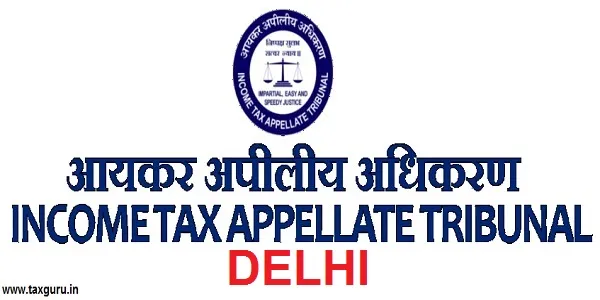Saibal C. Pal
 KRAMER Vs KRAMER, MITTAL Vs MITTAL, State of … Vs State of ………; and SEBI Vs IRDA ! … Vs Central Govt, SEBI, IRDA ……. (Public Interest litigation)
KRAMER Vs KRAMER, MITTAL Vs MITTAL, State of … Vs State of ………; and SEBI Vs IRDA ! … Vs Central Govt, SEBI, IRDA ……. (Public Interest litigation)
________________________
All the above cases/disputes are a combination of celluloid episodes and real life. They all have one feature in common – all of them could have been avoided. Another feature is each one is fought with the most unexpected opponent. While the first two matters are imaginary in celluloid, family matters taken to Court the third one is among the several cases filed by a State Government against another. The Fourth one is a dispute between two regulatory authorities, namely the Securities and Exchange Board of India (`SEBI’) and the Insurance Regulatory and Development Authority (`IRDA’) and while the former regulates the capital market, the latter controls the insurance sector. Dispute between SEBI and IRDA has raised hue and cry all around starting from the Government to the investors who find themselves trapped in the midst of the quarrel which has resulted in the filing of the fifth case as a public interest litigation before the High Court at Mumbai. The episode on Unit linked Insurance Plans (Ulips) started on 9th April, 2010 when SEBI issued notice u/s 11 of the SEBI Act, 1992 to the 14 life insurance companies namely, Aegon – Religare, Aviva, Bajaj Allianz Life Insurance, Bharti AXA, Birla Sun Life, HDFC Standard Life, ICICI Prudential, ING Vysa Life, Kotak Mahindra Old Mutual Life, Max New Life, Metlife India, Reliance Life, SBI Life and Tata AIG Life, banning them from selling Ulips. This surprised all particularly when the insurance regulator had approved the scheme.
It is important to understand Ulip which is a combination of investment in securities with the benefit of life insurance. The scheme is popular. It constitutes 90 per cent of the portfolio of the 14 insurance companies. Monthly premium collection from the Ulip scheme lauched by the insurance companies aggregate to Rs 5000 to Rs 7000 Crores. The ban on the scheme was a surprise for the investing public but the conflict is stated to have brewed for quite sometime between SEBI and IRDA which did not surface. On 10th April, 2010 IRDA reacted to the ban of SEBI on the Insurance companies and referred the notice as `misconceived without jurisdiction.’ IRDA Chairman, Hari Narayan immediately reacted to the ban of SEBI and made a statement that the insurers would be affected by it and it would disturb the financial stability. IRDA was served with the copies of the letters issued to the insurance companies. IRDA further issued a statement that about 7 crore Ulip-holders involving premium collection of about Rs 90,645 Crore would be affected. During April, 2009 and February, 2010 another 0.68 crore policies involving premium collection of Rs 44,611 Crore were sold. The 14 insurance companies having equity base of Rs 16,7281 Crore have sizeable investment portfolios.
Dispute between the regulators in respect of the 14 insurance companies commenced when SEBI drew attention of IRDA that the said companies were not permitted to access the market as the schemes were not registered with SEBI. On December 14, 2009 notice was issued to HDFC Standard Life. Further on January, 15, 2010 notice was issued to the other 13 insurance companies. Copies of the letters were served on IRDA also. On February, 10, 2010, IRDA replied to SEBI stating that Insurance companies are permitted to sell Ulips. Again, on February, 22, 2010 IRDA supplemented their earlier reply that ULIPs have mandatory insurance elements and they do not fall under SEBI purview.
IRDA Chairman, expressed concern on the ban by SEBI on Ulips and stated that it is likely to lead to:
i. forced premature surrender of insurance policies by the Ulip- holders, leading to substantial loss;
ii. complete drying up of revenue flows to the insurance companies, which would disrupt payment of benefit on maturity, death and/ or other admissible claims, putting the policyholders and the general public to irreparable loss; and
iii. financial position of insurers will be seriously jeopardized, thus destabilizing the market and upsetting financial stability.
Prior to the year 2000, insurance sector was under the control of the Government. Thereafter, the sector was opened to the private sector. In the year 1999, Insurance Regulatory Development Authority Act, 1999 was passed to establishment an authority to protect the interest of insurance policies, regulate, promote and ensure the orderly growth of the insurance industry for matters connected therewith or incidental therewith.
SEBI the regulator of the capital market permits and monitors Mutual Funds ( MFs) and other Collective Investment Schemes (CIS) . MFs and CIS are required to be registered with SEBI and comply to the regulations framed for them. ULIPs are similar to MFs with additional benefit of cover life of the policy holder through an insurance policy. ULIP is a combined product in which investment is by UTI and the cover is provided by a group policy from LIC and is in existence quite sometime and was a popular means of tax deduction u/s 80C of the Income Tax Act, 1961 much before the insurance sector was opened up to the private sector. After the private sector was permitted to do Insurance business in 2000 and life insurers started Ulip as an instrument. SEBI views Ulips as a of a mimic of MFs and therefore insurers are required to obtain prior approval of SEBI for the product. SEBI is set to bar more life insurance players, including LIC, from selling fresh Ulips unless their plans are permitted by SEBI. Market share of LIC in Ulip sale is 40 per cent being the highest among Life insurance companies.
Under the present circumstance it is important for the Ulip policyholders to know whether they should continue to pay their renewal premium. Ulip policy holders would be the worst suffers in the open spat between the regulators. SEBI officials, however, do not see conflict in the two regulators exercising oversight on players operating both these markets on the same product as anything to do with investment in the securities market require their approval.
The sudden public spat caused the Government to intervene and the Finance Minister issued a statement to check any adverse affect in the market so that the policyholders are not affected. To overcome the hurdle of the notice issued to the Insurance Companies by SEBI, the insurance companies have to challenge the same before the High Court. But one view is that SEBI notice being a quasi judicial order, can be challenged in the SAT only and appeal against any order of SAT lies only before Supreme Court ( S 15 Z of the SEBI Act). Regulatory turf battles were witnessed in the past but it has never quite come out into the open in the present manner. Since the stakes are high, interest of policyholders have to be protected from any damage. The securities market is bound to be affected as there is substantial investment in equities under Ulip by the insurance companies. Earlier SEBI drew the attention of LIC in respect of Ulips to which LIC responded stating that SEBI did not have the remit or jurisdiction to regulate Ulips.
Government needs to intervene decisively to end this dispute not only to resolve the spat between the two regulators but more so in the interest of the investors who have invested there hard earned savings. Further the amount invested involves several crores. On 12th April, 2010, the Finance Minister said: `To resolve any ambiguity and to ensure smooth functioning in the markets, the regulators have agreed to jointly seek a binding legal mandate from an appropriate Court. Meanwhile, status quo ante is being restored.’ SEBI on 13th April, 2010 issued a new order modifying its earlier directive and allowing the 14 life insurance companies to continue selling existing Ulips. However, the order states that no further new Ulip could be launched by them. But the second order of SEBI failed to impress IRDA who have in a statement gone to say that they will continue to approve insurance products as the products fall within the ambit of insurance regulations.
Policy holders have started hitting back. There is hue and cry all round. An investor in Mumbai has already filed a PIL before the High Court at Mumbai. Meantime, SEBI has already filed caveats before several High Courts including Supreme Court to fight their stand in the Courts. Legal eagles have gone on record suggesting filing writ by IRDA against the SEBI orders.
On 15th April, 2010 media carried the news that the spat between the regulators was a result of the ego clash of the two Chiefs of the regulators, C.V.Bhave and Hari Narayan. It is stated that the seed of the dispute was sown in August, 2009 when the market regulator abolished entry loads for MFs.
IRDA has refused to buy the argument that Ulips have an element of investment which is the domain of SEBI Accordingly SEBI should not have a say in such policies which are purely insurance. Whatever the regulators may say it must be understood that the policies in question are related to the public of this country and it should be ensured by the regulators that they are protected and must not suffer due to differences between the regulators. Regulators have been appointed to safe guard the interest of the investing public and there should not be any event which is likely to adversely affect them. It must be remembered that disputes leading to battles result in win or loss to one side but the issue is never settled by such win or loss to one side. There will be only destruction during the period the battle is fought. In this case the policyholders will be the sufferers. Further there will be no new investment putting the insurance companies in difficulty of running their operations particularly to meet their obligation on maturity. Iraq and Iran fought between them for 10 years but was the dispute between them resolved when peace was forced to be declared? Both the countries only faced destruction. In the movie Kramer Vs Kramer the husband and wife fought a divorce case and separated. The husband and wife fought severely for child custody giving reason that the custody was required for the benefit of the child. One side won the custody case but did the child benefit ultimately? The child lost the love and effection of his parents which is so essential for a child in the adolescent years. Ulip policyholders should not be made to suffer in the battle between the two regulators. In the interest of the country.
It is important for the Government to work out a method for a win-win situation for the regulators and the policyholders. Unless policyholders are protected their will be a turmoil in the financial market. It is significant that the Government should ensure clarity in the Acts governing the activities of the two regulators.
The Companies Act, 1956 was amended with effect from 13.12.2000 to insert S 55A to clearly bring out the provisions which are to be administered by SEBI and ROC under the Act to avoid double prosecution under two different Acts for a single offence committed. Article 20(2) of the Constitution prohibits double punishment for the same offence. In 1995 S 20A was inserted in the SEBI Act through an amendment which provided that no civil court shall have jurisdiction in respect of any matter or over any order of the Board or the Adjudication Officer. Due to the amendment all frivolous cases in the civil courts came to an end.
Unless the Government resolves decisively the dispute between the two regulators which resulted in the public spat the insurance sector and the investors in Ulip are likely to face huge financial loss. Protection of the investors’ hard earned money is of utmost importance.




















Mr V.Swaminathan’s detail reasoning in favour of administrative action rather than litigation to save the situation created as a result of the public spat between the two regulatory authorities is considered appropriate. Such disputes must be avoided in future otherwise the interest of retail investors will be affected.Unless they are protected the financial market can never stand errect.
Retail investors must come together to protest against the recent happenings. How can they made a victim? Who will make good their loss?
This refers to the above article – sebi-vs-irda-is-litigation-the-only-way-to-save-policyholders-interest
Should not the only sensible answer to the poser from its writer be – most certainly, litigation is ‘no way’ – at all !
REASONING:
THE ARTICLE @
COMMITTEE FOR REDRESSAL OF DISPUTES – UNTITLED DOCUMENT
– MAY BE FOUND TO SUM UP THE UNEQUIVOCAL RESERVATIONS, REACTIONS AND VERDICT OF THE SC.THEY ARE, IN MY CONVICTION, OF EVERY RELEVANCE TO THE SUBJECT.
ESPECIALLY, THE NARRATION IN INTER ALIA THE FIRST TWO OR THREE PARAGRAPHS OF THAT ARTICLE BEARS OUT WHAT THE SC HAD TO SAY, RATHER STRONGLY RECOMMEND, TO THE GOVERNMENT, IN THE MATTER OF ITS ‘INHOUSE’ DISPUTES.
IN MY VIEW, THE ADVICE OF THE APEX cOURT- REALLY TO BE TAKEN TO HAVE BEEN ADDRESSED TO ALL THOSE RESPONSIBLE AT THE GOVERNMENT LEVEL – THOUGH, IN TERMS, TO THE LAW MINISTRY AND THE CABINET SECRETARY, -IS OF EVERY RELEVANCE; AND IF SO, OUGHT TO HAVE BEEN BORNE IN MIND IN ACTING APPROPRIATELY IN REGARD TO THE UNWITTINGLY ONGOING WAR -IN RE. SEBI VS IRDA
A POINTED QUESTION CALLING FOR A RESPONSIBLE ANSWER IS THIS: WHO IS SO RESPONSIBLE TO PROVIDE THE ANSWER TO THE ‘PUBLIC’?
VSWAMINATHAN
Many customers feel cheated by the policies of HDFC standard life.See this HDFC standard life complaint Regulatory authorities should take serious note of this issue.
Brilliant piece, indeed.
The real story must be made public, as it is not merely ego clash, but something to do with very large pecuniary stakes.
Sir
The Article and the critical comments by one or two seniors have proved to be a useful reading.It sure questions the extent of Regulatory powers of SEBI
Thank You
CS Suhita Mukhoapdhyay
Dear sir,
My points of arguements are:
When every type of financial institutions are regulated by a specific Regulatory Body apointed by Parliament, the supreme body in a democratic set up, how it is correct for one Regulator to interfere and and seek registration of other units, when they are already regulated by another Regulator? Don’t you feel that such a behaviour is not befiting of a Regulator? What will be the situation if RBI start interfering with the Money Market or liquid funds of Mutual Funds or SEBI wants to regulate banks because they are aslo pooling public funds and invest in seurities in money market as well as in equity market? It is always better that any organisation is controlled by one Regulator than by more than one. If it is so important, SEBI must have approached Finance Ministry and sought their intervention rather than taking unilateral action. When the matter is aslready taken up WITH fINANCE MINISTRY AND “SWAROOP COMMITTEE” HAS ALREADY SUBMITTED ITS FIRST REPORT regarding reduction of upfront commission on insurance policies and also on the formation of a Supreme Regulator for all financial products namely FINANCIAL WELL BEING BOARD OF INDIA[FINWEB]. The Committee’s Report has also suggested that FINWEB will have two divisions namely (1) Self Regulatory Organisation [SRO] and (2) Financial Literary Cell. When these actions are already on the card the unilateral action of SEBI creats doubts about its intentions while seeking the registration of insurance companinies.
Before introduction of ULIPS there was no transparency in the insurance products investments. Though then also LIC was one of the largest institutional investor in securities, both in debt and equity, there was no feedback to the policy holders about the earning made out of the investment of their premium. Just like banks interest, LIC declared Bonus and the policy holders simply accepted it. Only after introduction of ULIP, the investment portion of policy holders’ premium was invested in most transparent manner according to the wishes of the policy holders. In the first five years these policies also gave very good return to policy holders which prompted them to log in to more ULIPS. The response to ulip was so fast and good that forced even LIC to depend more on ULIP deviating from their traditional endowment policies. When TERM policies are of the least cost how much of LIC policies are term policies and not endowment policies before ULIP came into existence? If I may submit, the pure term policies were never recommended by LIC though they had only one plan for it out of their 150 and odd tables. Before ULIP, LIC was selling mostly endowment and Money back policies WHICH GAVE HARDLY 3-5% COMPOUNDE ANNUAL RETURN ONLY FOR POLICY HOLDERS. AT THAT TIME ALSO THE COMMISSION PAID TO INTERMEDIARIES WERE HIGH RANGING BETWEEN 15 – 25%. Even when the policies were surrendered first one year premium was total loss in addition to the loss in surrender value calculation in the first three years. But in ULIPS, whenever policies are surrendered the fund value is payable which accrues from first premium and as such it is better than any other endowment policies. If a policy holder uses the switch offers offered by the companies he can certaily imrove his return subject to his ability to predict the market. HERE HE CAN SWITCH FULL AMOUNT IN HIS CREDIT OR FUTURE INVESTMENT ONLY OR BOTH ACCORDING TO HIS CHOICE BUT IN MUTUAL FUND IF HE DO SO HE MAY HAVE TO FACE EXIT LOADS. Also he can invest in debt funds and still gain Tax Deduction depending upon the policy holders risk appitite, whch is not possible in ELSS.
Coming to charges on ULIP I fully agree that the up front charges are unduly high going upto 40% in some cases. Even LIC is charging more than 25% for initial two years. There is no justification for these high charges. It is certainly in favour of intermediaries and not in favour of policy holders. It can be brought down to 2-5% taking into account the procedures involved. It can not be Nil Upfront like MF Schemes because it invloves medical investigation charges also. Being an Insurance product it must take into account two aspects namely (1) Long Time period and (2) ADEQUATE LARGE LIFE COVER. ALSO WE MUST AVOID SINGLE PREMIUM AND TAKE MONTHLY REGULAR PREMIUM WHICH WILL ACT AS SIP FOR LONG TERM. In a long term policy the average cost per annum reduces to 3-5% only which can well be compensated through better returns compared to return on endowment policies. Please note that in Insurance Policies, charges on endowment policies are also very high including mortality charges which were averaged and collected from the first year at a rate applicable to after 15-20th year. In ULIPS mortality charges are collected on yearly basis based on age and only when the insured crosses the age of 50 his premiums are high.
If reducing the upfront charges are the only reason for SEBI to seek registration of the insurance companies, can it not be discussed with IRDA through Finance Ministry and achieve that goal? I feel this can be an easier and less time consuming method than the step adopted by SEBI.
If charges is not the criteria, but insurance companies’ investment in securities is only the
criteria for seeking the registration under SEBI then it must have taken place from the date of formation of SEBI because LIC is the biggest institutional investor in this country even before the formation of SEBI. Further more there are also insurance cum pension products issued by few insurance companies in which there is no upfront load at all. For example in case of ICICI PRU LIFE STAGE PENSION ADVANTAGE THERE IS NO PREMIUM ALLOCATION CHARGE AT ALL. It means that entire premium will be invested and other chrges like fund management / policy administration, Mortality Charges and other charges only will be deducted before investment.
If SEBI is so much concerned about investors protection, don’t you feel by sudden withdrawal of investment by policy holders due to the creation of panic in their mind about the future of their investment, there can be a crash in the security market by which all investors will be affected including investors in Mutual funds? The Financial Data says that more than Rs.92,000 crores are invested in securities market due to ULIP.
More than provision of employment by insurance companies, what is important is the provision of Financial Capital particularly for long term projects by the insurance companies which is most impotrtant for our economic growth.
MY SUGGESTIONS TO IMPROVE THE ULIP AS MORE INVESTOR FRIENDLY ARE:
We must try to eliminate the bad parts of the practical followup of ULIP schemes for which the main reason is mis-selling. We must plead for minimum of 25 times and maximum of 100 times the premium payable as life cover.
secondly the minimum period of ulip must be increased to 10years and not 1 to 5 years as it is now.
The upfront charges must be reduced to a fixed sum for every policy depending upon the cost of medical tests involved, stamp duty payable on the sum assured etc.
The upfront commission to intermediaries to be fixed reasonably again on a fixed sum basis rather than on a percentage of the premium.
The trail commission should also be a fixed sum based on a certificate from the policy holder that he continues to get the service of the intermediary and he is accepting to pay this charge out of his premium. In the present mode of ECS, BILL Junction, RTGS, NEFT etc. the role of intermediary has substantially come down. His role is mostly as Financial Advisor in advising the client about switches to be made, its quantum and timing through which the investor can earn benefits and not merely as a service provider.
For every ULIP policy, in addition to present method of getting the applicant’s acknowledgement for 6% and 10% return calculations for his invetment portion, there must also be another calculation giving what will be the cost or premium for his sum assured if he take a pure term policy. Let the investor decide after taking all these details into account what he wants. Let it also state that in a ULIP the returns will depend on market performance and not an assured one.
In my view all these steps can be taken by IRDA itself and it does not require prior registration with SEBI. There is nothing here that SEBI has to regulate.
Let us curtail all the unwanted expenditures in the guise of product promotional and marketing expenses and try to market the investment products based on their return and other benefits to the investors.
Let the Financial assets be marketted on the basis of their long and short term benefits and accompanying risks
In order to achieve the above, let there be strict selection as well as monitoring of intermediaries after imparting adequate knowledge about these products.
If possible, let us also discuss about how to fix responsibilty for intermediaries when they do misselling.
I hope the above ten points will deliver good to the invetors in general. Will the Regulators listen?
Thanking you,
CA.N.VENKATESWARAN.
The article is one in the series in the recent days which attempts to cover and bring to focus the most crucial aspect of ‘public interest’ which has come to be challenged by SEBI’s highly controversial Order banning ULIPs. The serious issues that have come to be surfaced are akin to – off and on, high tides sweeping to the shores tonnes of filth ever lying underneath the vast surface of the Sea.
These write–ups carry on the sleeves –nay, forehead, being more visible- the mutually varying attitudes, approaches and reactions to the sensational Order of SEBI. The diagonally opposite stance of IRDA could not have surprised anyone who knows the traditionally governing ‘fundamentals’.
Every extant regulatory authority, in acting on, or reacting to, in any such matter, mostly opt to confine itself to its rules and regulations so framed as to take care of only the interests of the given sector coming within its purview. These ‘rules’ are invariably framed in a manner that – they address themselves to and meet only the ‘parochial; concerns of the players in the sector the authority is expected to govern. For obvious reasons, and as a matter of conventional practice, the most of such rules or regulations are found to be not necessarily founded on any ‘principle’ -in its profound and idealistic sense, from a socialistic point of view. The inevitable consequence is, in the event of being faced with a conflict of interests, more pointedly, such as herein, – a conflict of ego or turf war, or any other term one can think of – each authority strives and sticks to its own gun, ignoring or bypassing what the other authority has to say, – ‘Come What May’. So much so, the rules as also the steps taken by each one of them on a peremptory basis blatantly tend to overrule or bypass the most vital objective they are expected to serve or sub serve – namely, the larger interests of the investors or insured.
2. Somewhere it says: “No wrong becomes right simply because it has been routinely done for over 10 years, said a senior legal expert who did not want to be identified: “This kind of thing does not hold in law”.
To comment: – One has no clue which law he had in mind. For that matter, one wonders whether he himself had a clue. Certainly, no ordinary investor or his roadside broker – who is anyway neither an expert’ nor a ‘legal expert’, – could be safely assumed to be so equipped as to understand even an iota of what the unidentified legal expert has said or meant to say.
3. As has been observed elsewhere: Even as both regulators stress that their ultimate objective is to protect the interests of the investing or insuring public, the feud is likely to confuse them.The finance ministry has taken a recalcitrant and indifferent attitude , and tacitly refused to intervene and resolve the issue. Had it done so, as was widely expected, and brought about a serious dialogue between the two regulators, a solution could have been surely found. IN the result, the conflict lingers on.
4.Hats off to Mr PM, in his role as the FM, for having shared publicly his great feelings: – “Financial markets needed to increase depth and expand financial literacy so that inclusive growth can be achieved. Simultaneous move for investor protection and education will enlarge markets’ reach and ensure more inclusion.”
– Whatever the quoted words mean or truly meant to convey.
Even so, what he seems to have had in mind are long term measures. If so, it is anybody’s guess as to how long it is likely to take, for even the initial step of giving a shape to the venerable senior most political leader’s ‘feelings’ – Albeit, not to so much worry, for the nonce, as to how long the concerned investors / insurers are destined to wait for any action, more so constructive one at that, from the quarters up-above.
5. Topping it all, the seemingly predominant soul searching question calling for a straightforward but upright answer is this: – Could not the close- to- crisis situation – having the potentials for a nation-wide impact – have been avoided or obviated, had SEBI, with due diligence, realized the obvious limitations on its own powers. Instead, it decided to invoke and exercise them at a much desirably earlier point in time– be it 5 or 10 years, – to approximate.
vswaminathan